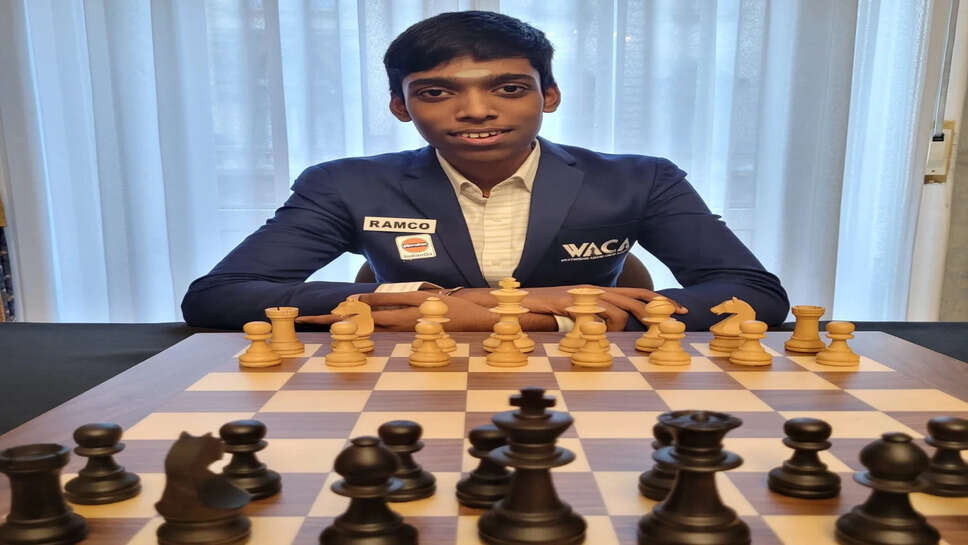Teen Grandmaster Topples the King: Praggnanandhaa’s Statement Win

In what is fast becoming one of the most exciting rivalries in modern chess, Indian teenage sensation R Praggnanandhaa added another feather to his cap by defeating former World Champion Magnus Carlsen at the 2025 Las Vegas Freestyle Chess event. The victory wasn't just a symbolic triumph of youth over experience—it was a game packed with tactical clarity, psychological resilience, and positional brilliance.
Let’s break down how Praggnanandhaa outwitted the Norwegian chess titan on one of the biggest experimental stages in the game.
Freestyle Format: Innovation Meets Pressure
The Las Vegas Freestyle Chess event is unlike classical tournaments. With shorter time controls, dynamic openings, and no specific line preparation, the format encourages creativity and punishes hesitation. Players are expected to think on their feet and adapt rapidly—a style that arguably benefits intuitive players like Praggnanandhaa.
Unlike classical chess where Carlsen’s positional grinding dominates, the freestyle format levels the field. It opens the door for aggressive, fast-paced gameplay and tests reflexes, risk-taking, and tactical sharpness.
The Opening: A Calculated Departure
Carlsen, with White, opened with 1.e4. Praggnanandhaa responded with the Sicilian Defence—an ambitious and double-edged choice, especially in rapid settings. The variation quickly entered uncharted territory, bypassing heavily analyzed main lines.
By move 10, it was clear that both players were improvising. Carlsen looked to dominate the center and gain space, while Praggnanandhaa opted for piece activity and flexible counterplay. Unlike many players who fear Carlsen's positional squeeze, Praggnanandhaa took the fight to him early.
Middle Game: Precision and Provocation
What defined Praggnanandhaa’s approach was his refusal to get passive. He launched a queenside pawn expansion while keeping his king safely tucked behind a solid structure. At the same time, he sacrificed tempi to activate his minor pieces to maximum effect.
Around move 18–20, a pivotal moment occurred. Carlsen tried to seize control with a central pawn break, but Praggnanandhaa foresaw the tactical implications. Rather than reacting defensively, he created a temporary imbalance with a knight retreat that looked passive but baited Magnus into overextending.
This phase of the game showed deep strategic maturity. Praggnanandhaa didn’t just survive Carlsen’s pressure—he flipped it into an opportunity.
Key Tactical Sequence: Moves 23–28
The decisive sequence came around move 23. Carlsen, perhaps sensing a slow position slipping away, played an aggressive rook lift that turned out to be the critical error. Praggnanandhaa unleashed a devastating counter that began with a bishop sacrifice—an apparent positional piece drop that suddenly opened files toward Carlsen’s exposed king.
Using flawless calculation, he combined a queen shift and a rook battery to set up an unstoppable threat. By move 27, Carlsen was facing a forked king and queen or mate in a few moves, and had no clean escape. The resignation came swiftly.
The crowd, both online and at the venue, was stunned.
What Went Wrong for Carlsen
Magnus Carlsen is not an easy man to beat—especially when he has control over the pace of the game. But in this matchup, a few key elements worked against him:
-
Overconfidence in Complexity: Carlsen’s choice to play dynamically instead of grounding the position allowed Praggnanandhaa to keep counterchances alive.
-
Underestimating Tactical Threats: In a rare lapse, Magnus seemed to miss a crucial tactical motif around move 25, likely due to time pressure.
-
Mismatch in Risk Strategy: Carlsen took risks in the wrong moments—where Praggnanandhaa had preemptively calculated deeper lines.
Why Praggnanandhaa's Win Matters
This wasn’t the first time Praggnanandhaa beat Carlsen, but it felt different. Previous wins came in online rapid tournaments or in games where Carlsen may have been experimenting. But in Las Vegas, under the freestyle spotlight and intense scrutiny, Praggnanandhaa didn’t just win—he outplayed the world’s best in every phase.
It marked:
-
A symbolic generational shift in chess, where young players no longer fear the legends.
-
A reflection of how flexible thinking and fast calculation are becoming vital in the modern game.
-
A personal milestone for the 19-year-old grandmaster, whose consistency against top players is no longer surprising—it's expected.
Psychological Edge: Calm in the Storm
Throughout the match, Praggnanandhaa’s body language was telling. Calm, composed, and laser-focused, he never flinched—even when Magnus built up positional pressure early on. Where other players would try to draw or trade pieces, he showed courage to fight back.
This cool-headedness, especially in front of Carlsen’s psychological intensity, is rare even among seasoned grandmasters. It speaks to Praggnanandhaa’s temperament and growing confidence on the elite circuit.
The Bigger Picture: India’s Chess Revolution Rolls On
This win is not isolated. It’s part of a broader movement where Indian chess is rising at unprecedented speed. With Gukesh D recently winning the Candidates and Arjun Erigaisi breaking into the top ten, Praggnanandhaa’s win adds another milestone in India’s chess dominance.
He’s not just playing for trophies—he’s becoming a symbol of a confident new India in the global chess arena.
A New Challenger Emerges
Magnus Carlsen may still be the face of modern chess, but players like Praggnanandhaa are starting to chip away at his aura of invincibility. The Las Vegas Freestyle event was meant to shake up the status quo, and in Praggnanandhaa’s hands, it did just that.
His win was a mix of strategy, creativity, and nerves—all in perfect sync. More importantly, it showed that beating Carlsen isn’t a miracle anymore—it’s a measurable, repeatable possibility. And Praggnanandhaa might just be the future world champion to do it in classical format too.
The chess world should take note: the prodigy is no longer just promising. He’s proving.
